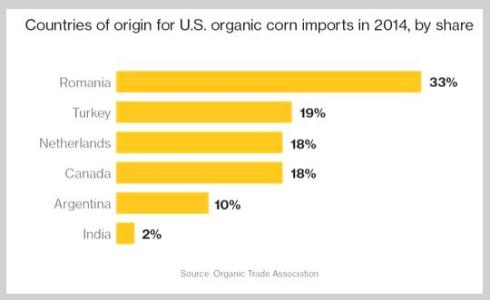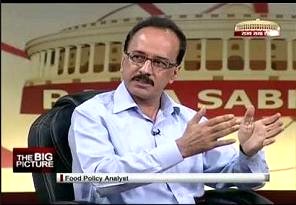In an under-researched and much-criticised article urging acceptance of genetically modified foods, Camilla Cavendish, formerly David Cameron’s adviser, asks:
“Can local wild plants or crops become cross-contaminated?”
As early as 2002 cross-contamination was widely publicised – see the New Scientist and a 2012 BBC report, headed by the following video & photograph:
“So-called ‘superweeds’ result from accidental crosses between neighbouring crops that have been genetically modified to resist different herbicides. Farmers are often forced to resort to older stronger herbicides to remove them.
“Brian Johnson, at English Nature is alarmed by the speed of the process: “This has happened in three or four years,” he says. The report predicts that, in the UK, plants with multiple herbicide resistance will be “almost impossible to prevent unless the crops are very widely dispersed.”
Ms Cavendish also asked: “Could insects be affected?”
 Insects and other pests can be affected: see this University of Reading report and America’s National Center for Biotechnology Information. Though these reports relate to insect pests one would expect ‘useful’ insects and organisms to be harmed by exposure to the chemicals used in genetical engineering. (Photograph: https://phys.org/news/2018-10-genetic-reveals-key-resistance-global.html)
Insects and other pests can be affected: see this University of Reading report and America’s National Center for Biotechnology Information. Though these reports relate to insect pests one would expect ‘useful’ insects and organisms to be harmed by exposure to the chemicals used in genetical engineering. (Photograph: https://phys.org/news/2018-10-genetic-reveals-key-resistance-global.html)
“The most important adverse characteristic of GM crops is the capacity of insect pests and weeds to develop resistance to GM induced insect resistance in crops or to herbicides used in conjunction with GM induced pesticide resistant crops” (Reading).
After accepting her genetically engineered Covid vaccine she asked if it made sense to spurn GM food.
 *Professor Michael Antoniou (left), writing as a ‘career-long contributor to medical biotechnology’ strongly disagreed with Camilla Cavendish’s statement that we must overcome the fear of genetic engineering in our food. He explained that medical applications of GM are completely different from food uses:
*Professor Michael Antoniou (left), writing as a ‘career-long contributor to medical biotechnology’ strongly disagreed with Camilla Cavendish’s statement that we must overcome the fear of genetic engineering in our food. He explained that medical applications of GM are completely different from food uses:
“Medicines are targeted at those who need them and are strictly regulated. Any effects are confined to the individual who gives their informed consent to accepting risks in exchange for hoped-for benefits. Effects are monitored post release”.
“What the UK government is advocating — and Cavendish is supporting — is the deregulation of GM foods, meaning the removal of safety checks and labelling that enables the public to choose whether to take the risk of eating a novel GM food.
“Labelling also ensures traceability in case something goes wrong — such as the appearance of new toxins or allergens, which, given the inherent imprecision and unpredictability of GM is well within the realms of possibility”
He ended: “The safeguards that exist under current GM food laws must be maintained to protect public health”.
–
*Michael Antoniou Head, Gene Expression and Therapy Group, King’s College London Department of Medical and Molecular Genetics, Guy’s Hospital, London
o










![mhart-missouri2[2]](https://i0.wp.com/political-cleanup.org/pcu_test/images/mhart-missouri221.jpg)


Recent Comments